February 9 - 15, 2014: Issue 149
Binnacle in Royal Motor Yacht Club – Broken Bay foyer - presented by Commodore Allan G Leslie
Finding your way around the ocean to a place you desire to go, and hundreds of years prior to the invention of GPS systems, required a knowledge of Navigation techniques and the use f a compass. There are no street signs, or more accurately, seaway signs, on the ocean. ‘Pilots’ who fly through skies have a navigator – but the first of these appeared on ships that sailed vast distances were ship's navigators, not to be confused with the even earlier ship's pilot (a person with knowledge of local waters who guides a boat into port:
Navigator: 1530s, from Latin. navigationem (nom. navigatio), from navigatus, pp. of navigare "to sail, sail over, go by sea, steer a ship," from navis "ship" and the root of agere "to drive"
Among the earliest instruments to determine position and direction used by navigators was the compass. The magnetic compass was first invented as a device for divination as early as the Chinese Han Dynasty (circa 206 BC). The compass was used in Song Dynasty China by the military for navigational orienteering by 1040-1044, and was used for maritime navigation by 1111 to 1117. European open-sea navigation began during the 15th century in what is termed the Age of Discovery.
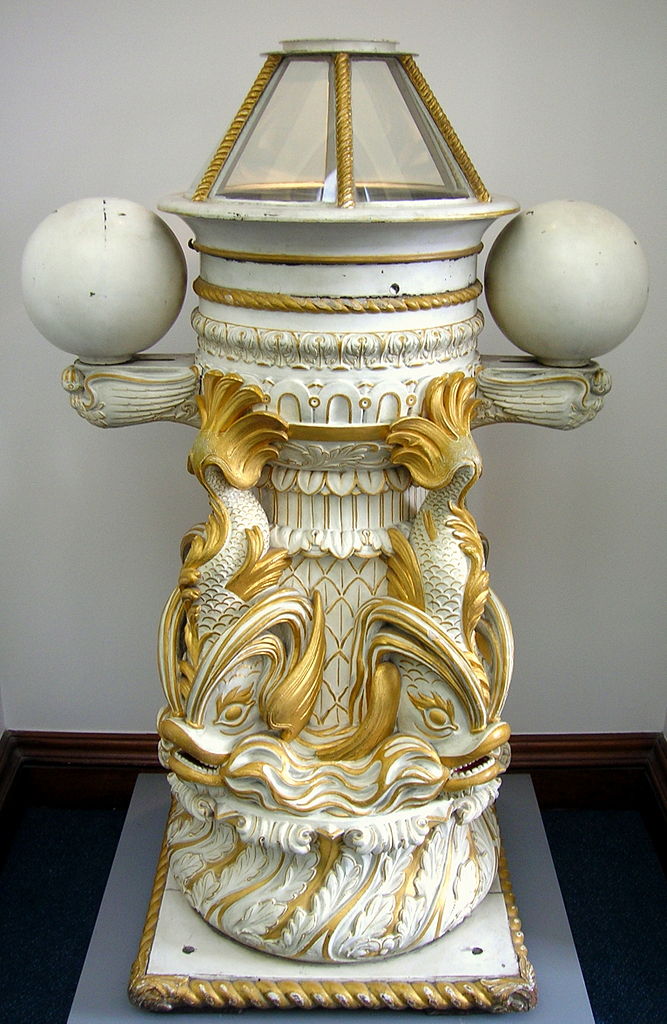 Seeing at night, aboard a wooden vessel, also required a lamp and being
able to view a compass without setting the ship aflame. The wild toss of seas
could also interfere with checking a compass bearing and the course plotted to
get from one side of the ocean to the other. It’s difficult to hold something
level while the deck beneath you is angled to rise above a thirty metre wave –
how to remedy these problems – a binnacle – the mount for the compass, usually
located on the wheel's pedestal and which also housed the other navigational
instruments needed. They were made so a compass was kept level and could also
lock on a course chosen so the sailor at the wheel could keep to this
course.
Seeing at night, aboard a wooden vessel, also required a lamp and being
able to view a compass without setting the ship aflame. The wild toss of seas
could also interfere with checking a compass bearing and the course plotted to
get from one side of the ocean to the other. It’s difficult to hold something
level while the deck beneath you is angled to rise above a thirty metre wave –
how to remedy these problems – a binnacle – the mount for the compass, usually
located on the wheel's pedestal and which also housed the other navigational
instruments needed. They were made so a compass was kept level and could also
lock on a course chosen so the sailor at the wheel could keep to this
course.
A binnacle is a waist-high case or stand on the deck of a ship, generally mounted in front of the helmsman, in which navigational instruments are placed for easy and quick reference as well as to protect the delicate instruments. Its traditional purpose was to hold the ship's magnetic compass, mounted in gimbals to keep it level while the ship pitched and rolled. A binnacle may be subdivided into sections and its contents typically include one or more compasses and an oil lamp or other light source. Other devices such as a sand timer for estimating speed may have been stored in the binnacle as well.
Binnacle (ie casing protecting a ship's compass) from the royal yacht Victoria and Albert III, 1899. photograph taken in the National Maritime Museum, London, UK by Rémi Kaupp
Originally spelt binnicle, now spelt – binnacle, this is a Nautical Term for a housing for a ship's compass from C17: changed from C15 bitakle, from Portuguese bitácula, from Late Latin habitāculum dwelling-place, from Latin habitāre to inhabit; spelling influenced by bin - 1615–25; bin + (bitt)acle < Pg bitacola < Latin habitāculum lodge] Bin - A container or enclosed space for storage. From Old English binne basket, probably of Celtic origin; related to bindan to bind. There is also; The ship's Binnacle List is the medical department's report of personnel at sick bay, excused from that day's duty. A compass binnacle in front of the ship's wheel. The small stove-pipe chimney vents the lamp used to illuminate the compass face at night.
We have, in the small samples of old reports pertaining to these wonderful collector’s items, left the original spelling as is – a good way to chart development in the invention and our language.
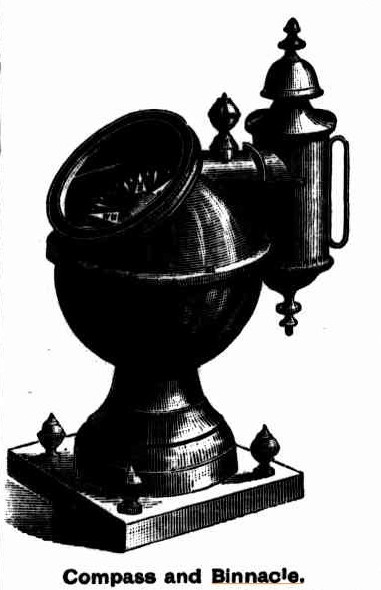 Although now defunct these housing for ship compasses and related
instruments such as binnacle lamps at the helm of each vessel are displayed in
yacht clubs around the world and have become synonymous as symbols of guiding
yourself by choosing and following the best course. So much so has this
symbolism been extended to a physical object that gifting them to others, not
only as attractive pieces, but also for their practical use, is a practice we
may all still benefit from:
Although now defunct these housing for ship compasses and related
instruments such as binnacle lamps at the helm of each vessel are displayed in
yacht clubs around the world and have become synonymous as symbols of guiding
yourself by choosing and following the best course. So much so has this
symbolism been extended to a physical object that gifting them to others, not
only as attractive pieces, but also for their practical use, is a practice we
may all still benefit from:
New Yacht Binnacle. One of the handsomest and, at the same time, most useful trophies yet presented for a yacht competition for the yachts of the Royal Sydney Yacht Squadron, is that given this season by Vice Commodore Milson. It is a new yacht binnacle fitted with host double needle liquid compass, and nickel silvered. Numerous testimonials have been received, but the following explains very fully. From the FIELD, Mr. J. Beavor Webb, of the Freda yacht, says -I do not think I have mentioned our compass and binnacle. Every sailor knows the difficulty of getting one that will remain perfectly steady in a sea way, which difficulty is increased in the small craft, they jump about so much more than the large ones. I have tried many compasses by different makers, and, until last May, could not get one which would remain perfectly steady at all times.
Right: Compass and Binnacle.
I then heard of a combination supplied by Messrs. Norie and Wilson, and, on seeing one, took such a fancy to it that I ordered at onco. - The peculiarity of them is that they are compass and binnacle all in one, not having any gimball ; the card floats in glycerine (and water), doing all the work they are remarkably pretty little things-at least everyone admires ours, which we always keep on deck, big ship fashion. I may as well say hero, in case anyone wishes for one, that I have tried all the other liquid compasses, and found them all fail, as in a heavy sea the card would fly about so much as to make it impossible to steer by it. New Yacht Binnacle. (1885, January 17). Australian Town and Country Journal (NSW : 1870 - 1907), p. 23. Retrieved from http://nla.gov.au/nla.news-article71022725
SOUVENIR FOR JAPAN Binnacle from 'Australia'. Captain J. F. Rollins will present a binnacle from H.M.A.S. . Australia to the Japanese Government, through Mr. Iyemass Tekinawa, Counsul-General on Monday at 3.15pm aboard the H.I.J.I.M.S. Iwato. SOUVENIR FOR JAPAN. (1926, February 5). Evening News(Sydney, NSW : 1869 - 1931), p. 1. Retrieved from http://nla.gov.au/nla.news-article126138548
BRISBANE'S BELL AND BINNACLE. Warship Mementoes for the City. When the proposal to demolish H.M.A-S. Brisbane, which has become obsolete, was first mentioned, the Brisbane City Council was asked by the naval authorities whether any portion of the warship was desired as a memento by the people of Brisbane. The council applied for the bell, thebinnacle, and the scroll, containing the vessel's name. Yesterday advice was received from the naval ' authorities that approval had been given for presenting both the bell and the binnacle to Brisbane, but the scroll was not now on the ship. The articles mentioned will not be available for some months, as they still form part of the warship, which is on its way to the shipbreaking yards in England. BRISBANE'S BELL AND BINNACLE. (1935, June 22). The Courier-Mail (Brisbane, Qld. : 1933 - 1954), p. 16. Retrieved from http://nla.gov.au/nla.news-article36766140
We don't see advertisements like this anymore - but early Sydney newspapers always had these items listed:
binnicle lamps - Advertising. (1828, January 31). The Monitor (Sydney, NSW : 1826 - 1828), p. 7 Edition: EVENING. Retrieved from http://nla.gov.au/nla.news-article31759457
On earlier improvements:
The construction of many early (mid-18th century) binnacles used iron nails, which were later discovered to cause magnetic deviations in compass readings. As the development of the compass and understanding of magnetism progressed, greater attention was given to binnacle construction to avoid compass disturbances caused by iron. With the introduction of iron-clad ships the magnetic deviation observed in compasses became more severe. Methods of compensation by arranging iron or magnetic objects near the binnacle were developed. In 1854, a new type of binnacle was patented by John Gray of Liverpool which directly incorporated adjustable correcting magnets on screws or rack and pinions. This was improved again when Lord Kelvin patented in the 1880s another system of compass and which incorporated two compensating magnets. These are colloquially known as "Kelvin's Balls" in the UK, and "Navigator's Balls" in the United States.
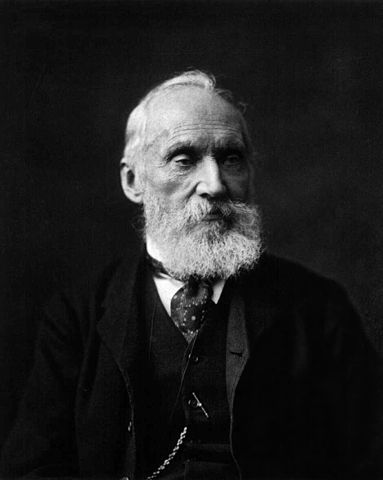 William Thomson, 1st Baron Kelvin OM, GCVO, PC, PRS, PRSE (26 June
1824 – 17 December 1907), was an Irish and British mathematical physicist and
engineer who was born in Belfast in 1824. Thomson was an enthusiastic yachtsman,
his interest in all things relating to the sea perhaps arising from, or at any
rate fostered by, his experiences on the Agamemnon and the Great Eastern.
Thomson's wife had died on 17 June 1870 and, already addicted to seafaring, in
September he purchased a 126 ton schooner, the Lalla Rookh and used it as
a base for entertaining friends and scientific colleagues. His maritime
interests continued in 1871 when he was appointed to the board of enquiry into
the sinking of the HMS Captain.
William Thomson, 1st Baron Kelvin OM, GCVO, PC, PRS, PRSE (26 June
1824 – 17 December 1907), was an Irish and British mathematical physicist and
engineer who was born in Belfast in 1824. Thomson was an enthusiastic yachtsman,
his interest in all things relating to the sea perhaps arising from, or at any
rate fostered by, his experiences on the Agamemnon and the Great Eastern.
Thomson's wife had died on 17 June 1870 and, already addicted to seafaring, in
September he purchased a 126 ton schooner, the Lalla Rookh and used it as
a base for entertaining friends and scientific colleagues. His maritime
interests continued in 1871 when he was appointed to the board of enquiry into
the sinking of the HMS Captain.
Thomson introduced a method of deep-sea sounding, in which a steel piano wire replaces the ordinary hand line. The wire glides so easily to the bottom that "flying soundings" can be taken while the ship is going at full speed. A pressure gauge to register the depth of the sinker was added by Thomson. About the same time he revived the Sumner method of finding a ship's place at sea, and calculated a set of tables for its ready application. He also developed a tide predicting machine. During the 1880s, Thomson worked to perfect the adjustable compass in order to correct errors arising from magnetic deviation owing to the increasing use of iron in naval architecture. Thomson's design was a great improvement on the older instruments, being steadier and less hampered by friction, the deviation due to the ship's own magnetism being corrected by movable masses of iron at the binnacle. The other point of note regarding this gentleman is the promotion of using the Morse Code as a means of communication at sea - Charles Babbage had been among the first to suggest that a lighthouse might be made to signal a distinctive number by occultations of its light but Thomson pointed out the merits of the Morse code for the purpose, and urged that the signals should consist of short and long flashes of the light to represent the dots and dashes.
GRAVITATING. COMPASS, AND COURSE-INDICATING BINNACLE LAMP.-The Earl of Caithness is the inventor of a mode of suspending ships' compasses, which for simplicity and efficiency surpasses anything we have yet seen. Instead of the two concentric brass rings having their axles at right angles, known as gimbals, and which consist of but two motions forward and lateral, Lord Caithness's invention keeps the compass always horizontal, whatever may be the motion of the ship. This desideratum is attained by the simple contrivance of a pendulum and ball attached, which still works in a socket in the centre of the bottom of the compass-bowl. The compass works, therefore, on one bearing on the ball-and-socket principle, and thus maintains its parallelism with the horizon in tho heaviest weather. The simplicity of this valuable invention is not more striking than its efficiency. It has already stood the most trying tests, and the oscillation of compasses to which it is applied, as compared with the oscillation of the gimbal compass, is as degrees to points. It only requires that the binnicle on which the gravitating compass is placed should have more width at tho base than the ordinary binnacle in order to give the pendulum sufficient play to follow the motion of the ship. The other invention, the course indicating binnicle lamp, is tho patent of Mr. W. Nunn, of St. George’s street, London Docks. It consists of an arrangement extremely simple, by which the light is thrown upon tho compass card without any diminution, while the light itself is hidden from view. The lamp is on gimbals, and remains always perpendicular, and the oil reservoir can never overflow with any motion of the ship. Bearings at night may be taken readily by the use of this lamp, for the cover of the binnacle may be removed while the light remains. Perhaps the most important part of this ingenious contrivance is that by which the course-indicator is used. The course being set, the indicator is turned by a key till the index-hand points to, the course, and there it must remain until the key is used again. When, therefore, the officer of the watch sets the course and turns on the indicator, the man at the wheel has that course always before his eyes, and there can be no dispute as to what course was given. The two inventions to which we have thus briefly called attention are amongst the decided improvements in compass arrangements which we have yet seen, and we commend them to the attention of all shipmasters who may not be acquainted with them.- Mitchell’s Register, June 26th. SHIPPING INTELLIGENCE. (1869, September 22). The Mercury (Hobart, Tas. : 1860 - 1954), p. 2. Retrieved from http://nla.gov.au/nla.news-article8861397
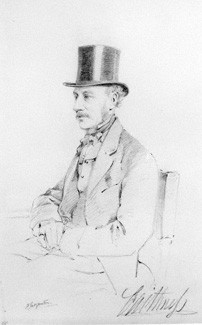 James
Sinclair, 14th Earl of Caithness FRS (16 August 1821 – 28 March 1881),
styled Lord Berriedale from 1823 to 1855, was a Scottish Liberal politician,
scientist and inventor. He was a Vice-Admiral of Caithness, tutor to Edward,
Prince of Wales, (the future Edward VII) and was a Lord in Waiting to Queen
Victoria - 1856-58, and 1859–66. Queen Victoria created him the 1st Baron
Barrogill, in 1866, taking the Barony’s name from the Castle of Mey which was
then known as Barrogill Castle. This is a peerage of the United Kingdom which
can only pass down the direct male line, and became extinct on the death of his
son, George Sinclair, 15th Earl of Caithness. He sat as a Representative peer
for Scotland in the House of Lords from 1858-66. He was elected a Scottish
Representative Peer in 1858, and served in the Liberal administrations ofLord
Palmerston and Lord Russell as a Lord-in-Waiting (government whip in the House
of Lords) between 1859 and 1866.
James
Sinclair, 14th Earl of Caithness FRS (16 August 1821 – 28 March 1881),
styled Lord Berriedale from 1823 to 1855, was a Scottish Liberal politician,
scientist and inventor. He was a Vice-Admiral of Caithness, tutor to Edward,
Prince of Wales, (the future Edward VII) and was a Lord in Waiting to Queen
Victoria - 1856-58, and 1859–66. Queen Victoria created him the 1st Baron
Barrogill, in 1866, taking the Barony’s name from the Castle of Mey which was
then known as Barrogill Castle. This is a peerage of the United Kingdom which
can only pass down the direct male line, and became extinct on the death of his
son, George Sinclair, 15th Earl of Caithness. He sat as a Representative peer
for Scotland in the House of Lords from 1858-66. He was elected a Scottish
Representative Peer in 1858, and served in the Liberal administrations ofLord
Palmerston and Lord Russell as a Lord-in-Waiting (government whip in the House
of Lords) between 1859 and 1866.
He was also a respected scientist and inventor and was a Fellow of the Royal Society. The short biography attached to his pencil portrait explains that he was an inventor of a steam carriage, (actually the modifier for safety reasons), the gravitating compass and a tape-loom. He was a great industrial improver, with great enthusiasm for modern machinery. He introduced “steam” to Caithness by improving and making previous designs safer. First came his “steam car” in 1860, followed by the steam plough which he used to create his new farm at Philip Mains, Mey. He also invented an automatic rail-carriage-washer for the American market. One of his most unexpected inventions was an artificial leg, with which he won a prize at the French Exhibition in Paris in 1866. In 1877, he published “Lectures on Popular and Scientific Subjects”.
Salty Sea dog!
The dog at the wheel. — On board the Frank Guy, schooner, now in Warnambool Bay (says the Standard), there is a canine wonder in the shape of a large brown retriever dog named Maori. He is hardly up to working a day in navigation, but he is an adept at the wheel, and steers admirably. A few days ago Captain Baile sent Maori to the wheel. Away he went and grasped the spokes in the orthodox sailor style, and alternately put to port or starboard. Occasionally he would glance at the binnicle, and look aloft to see thru the ship was full and by. Once, on entering Port Chalmers, the Frank Guy' had to pass between two ships at anchor, one of them a large immigrant ship. Captain Baile, knowing the schooner would steer herself for a few minutes in the light breeze, sent the men below and ensconced himself in the cabin keeping an eye on Maori, who was at the wheel, erect and attentive. The effect of the solitary dog steering a 200-ton schooner between the two crews and passengers, who crowded the bulwarks to wonder at the novel sight was striking. General News. (1883, September 21). Burra Record (SA : 1878 - 1954), p. 4. Retrieved from http://nla.gov.au/nla.news-article36008112
The binnacle shown here in the coloured photographs stands in the foyer of the Royal Motor Yacht Club – Broken Bay, at Newport. It was gifted to the club by Commodore Allan G Leslie (Life Member 1970) under whose leadership of four years many successful projects of upgrading the RMYC at Newport were undertaken, including reclaiming the foreshore, remodelling the swimming pool and building a 300 space carpark. The building of a new clubhouse started in April 1966 and was built around the old clubhouse, thus preserving the past with its fond memories. The official opening took place on 17th August 1968 and was performed by Lady Cutler, the wife of Patron and NSW State Governor, Sir Roden Cutler. This binnacle was placed to commemorate that opening of the new clubhouse.
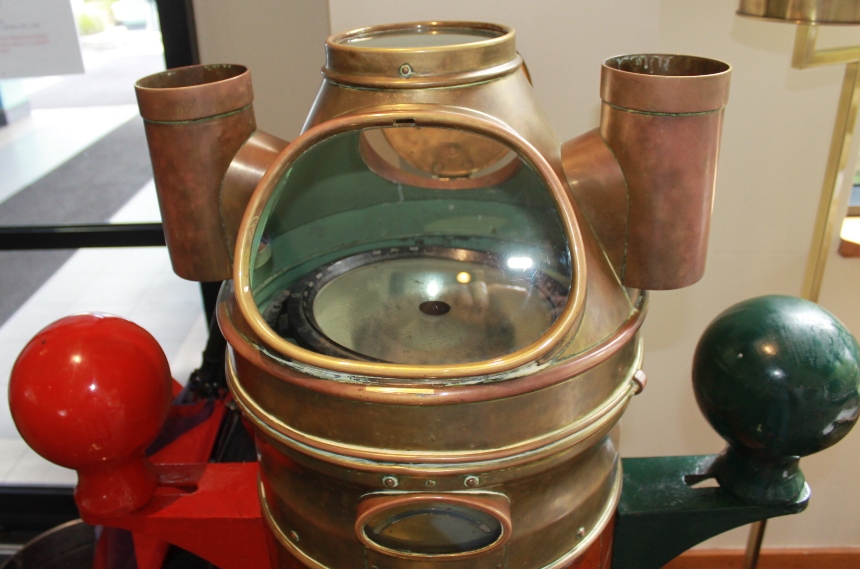
On Saturday 29th March, 2014 - the Blue Water Navigational Trial will take place through the Royal Motor Yacht Club - Broken Bay as part of the 2014 Pittwater Festival. This is for the keen power boat enthusiast and a navigational time trial that will see competitors negotiate a predetermined course testing their accuracy in navigation. Electronic Navigational aids can be used, which is an ideal opportunity to use all that gadgetry on board!
References:
Binnacle. (2013, December 3). In Wikipedia, The Free Encyclopedia. Retrieved from http://en.wikipedia.org/w/index.php?title=Binnacle&oldid=584421921
William Thomson, 1st Baron Kelvin. (2014, January 31). In Wikipedia, The Free Encyclopedia. Retrieved from http://en.wikipedia.org/w/index.php?title=William_Thomson,_1st_Baron_Kelvin&oldid=593321203
James Sinclair, 14th Earl of Caithness. (2013, October 29). In Wikipedia, The Free Encyclopedia. Retrieved from http://en.wikipedia.org/w/index.php?title=James_Sinclair,_14th_Earl_of_Caithness&oldid=579324908
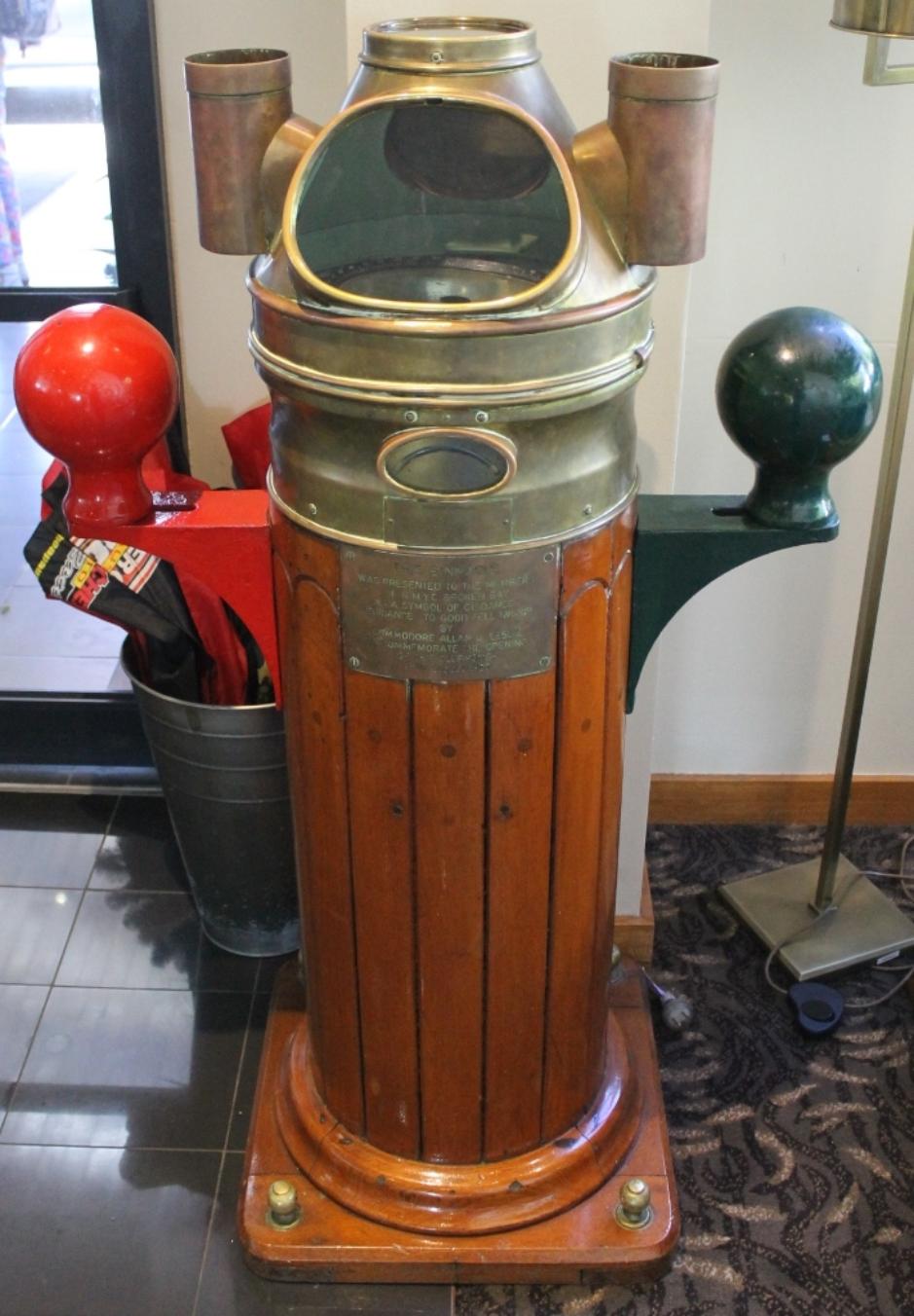
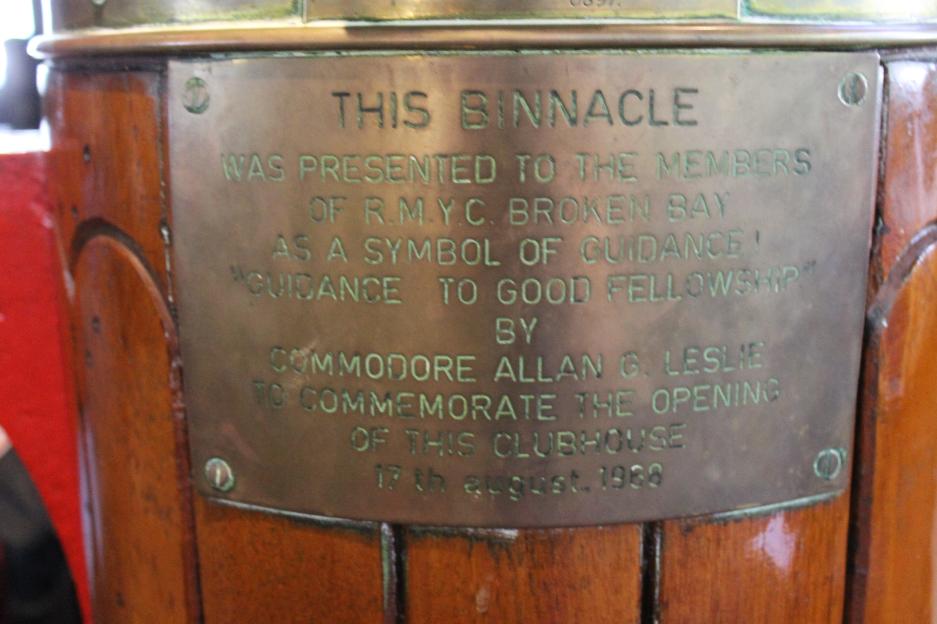
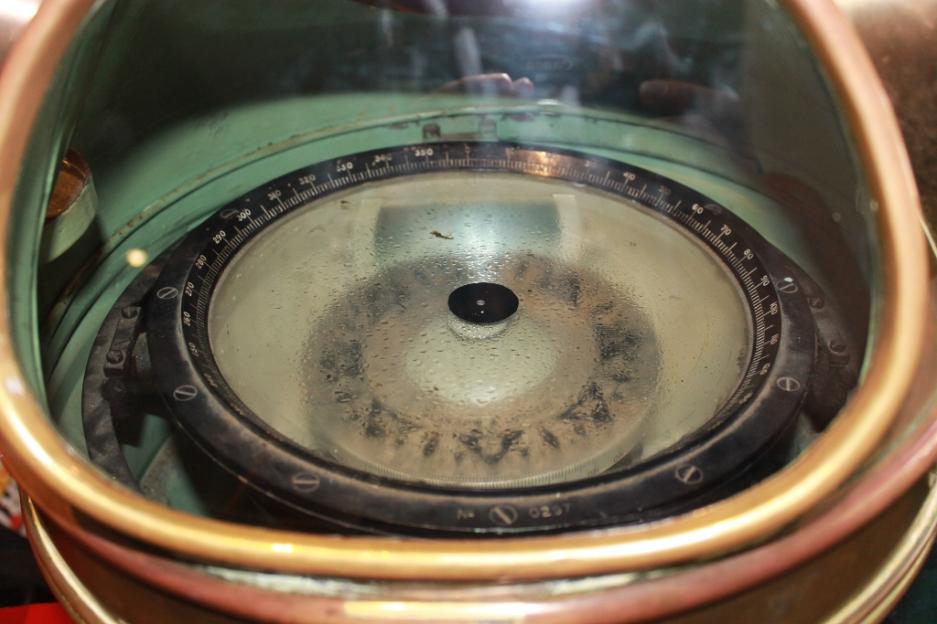
Researched/photographed by A J Guesdon. Copyright Pittwater Online News, 2013. All Rights Reserved.